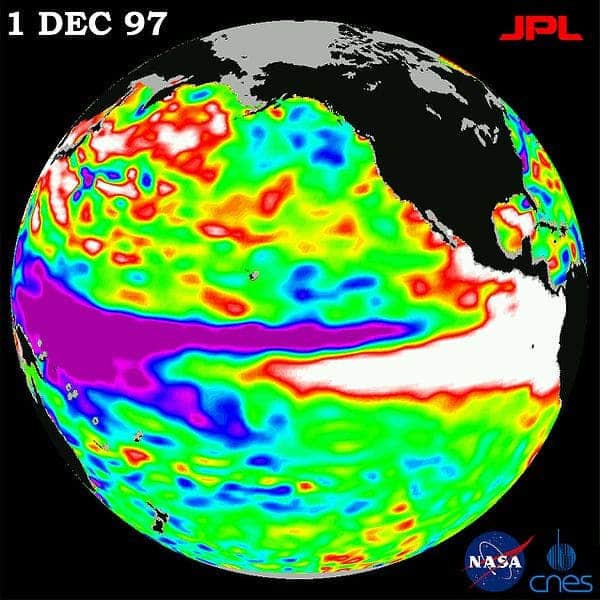Why would the El Niño be important for the rest of us that don’t live in the western part of South America? Well because it also influences the climate in North America, Asia, Australia, Africa, even Europe perhaps.. so that basically means the whole world. The El Niño-the southern oscillation or ENSO is a sort of a heartbeat of the Earth’s climate, that contains a warm phase (the El Niño) and a cold phase (La Niña). And just like the pulsations of a heart, it’s beats are not monotonous, it is a bit different with every pulsation: some of them are more spread apart than others, some are stronger, some weaker.
A new study that looks at the last 7000 years of El Niño-s finds that this pattern is even more chaotic than scientists previously believed: “This will be a shock for many paleoclimatologists,” says Axel Timmermann, a climate scientist at the University of Hawaii, Manoa, in Honolulu who wasn’t involved in the new research. “[These findings] are a stark contrast to their ideas.”
![Divers taking a coral core sample. [Via eurekalert.org] Divers taking a coral core sample. [Via eurekalert.org]](https://cdn.zmescience.com/wp-content/uploads/2013/01/cobb-kids.jpg)
The team chose to study the variations in the oxygen-18 and oxygen-16 ratio from 17 coral samples taken from Christmas Island and Fanning Island, which are both part of the Line Islands archipelago in the central Pacific. That area of the Pacific experiences higher than average values both in precipitation and temperature in an El Niño period, and due to this increased sensibility, according to Timmermann, it “makes the region a ‘sweet spot’ for climate reconstructions.” By analyzing these coral samples, the team gained access to the climate variability of the last 7000 years in that region of the Central Pacific – an archive that according to Kim Cobb, almost triples the amount of data previously available.
It turns out that long-term variations in the magnitude and frequency of ENSO events during the 20th century were larger on average than any other period in the last 7 millennia. As Kim Cobb says, there have been however, shorter intervals, especially in the 1600s when the El Niño variability was even stronger than in the last century. The relationship between higher ENSO variability and higher CO2 concentrations is very probable but cannot be proven yet due to the insufficient climate data now available.

“This [study] shows that ENSO is very variable, all over the map, and overturns the idea that ENSO was weaker during the mid-Holocene [about 6000 years ago],” says Julien Emile-Geay, a climate scientist at the University of Southern California in Los Angeles. This being said, it is too early to say weather the ENSO is inherently chaotic and completely separated from other climate forcing factors, the team says.
Timmermann says that maybe in the next 10 years there will be more data that will fill in the gaps of El Niño related climate archives that will also help to decode what factors if any, influence the mysterious ENSO, and by doing so, the regional and global climatic computer models will also be improved.
Was this helpful?



